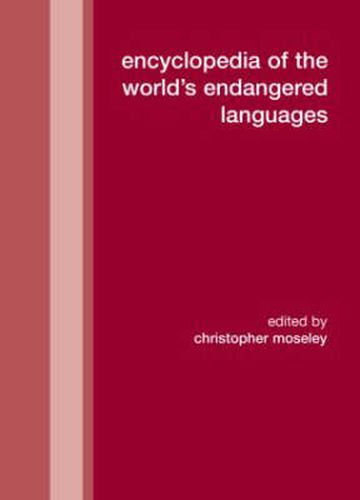Readings Newsletter
Become a Readings Member to make your shopping experience even easier.
Sign in or sign up for free!
You’re not far away from qualifying for FREE standard shipping within Australia
You’ve qualified for FREE standard shipping within Australia
The cart is loading…






Never has our knowledge of the world’s languages been more comprehensive, yet never have so many of those languages been threatened with extinction at such a fast rate. An effort to conserve all the information we have about languages threatened with extinction is not only imperative but a race against time. The concept of ‘endangerment’ is not an absolute but a relative one, and is dependent on the subtle interplay of a set of factors which can be identified and quantified, but the full effects of which are still not understood by linguists. Put in the simplest terms, a language is not in danger, no matter how few its speakers, if it is not subject to external pressures and if its speakers have sufficient reason to continue using it. A language is endangered if older speakers are failing, for whatever reason, to pass it on to younger generations. The Encyclopedia does not dogmatically assume that languages are organisms with a life of their own, independent of their speakers’ wish to preserve them. The moral assumption and raison d'etre of the Encyclopedia is that each language is a unique vessel of human thought patterns and traditions, that diversity is healthy, and that we are all impoverished by the loss of even one language. An introduction deals with problems of language preservation peculiar to the area; a survey of known extinct languages; and problems of classification. The introduction is followed by a list of all known languages within the region - endangered or not - arranged by genetic affiliation, with special marking of those listed as endangered or extinct in subsequent entries. Languages classified as ‘extinct’ are those whose last speakers have died within the period since penetration by metropolitan languages - therefore the period covered varies from region to region. The list is followed by entries in alphabetical order covering each language listed as endangered.
$9.00 standard shipping within Australia
FREE standard shipping within Australia for orders over $100.00
Express & International shipping calculated at checkout
Never has our knowledge of the world’s languages been more comprehensive, yet never have so many of those languages been threatened with extinction at such a fast rate. An effort to conserve all the information we have about languages threatened with extinction is not only imperative but a race against time. The concept of ‘endangerment’ is not an absolute but a relative one, and is dependent on the subtle interplay of a set of factors which can be identified and quantified, but the full effects of which are still not understood by linguists. Put in the simplest terms, a language is not in danger, no matter how few its speakers, if it is not subject to external pressures and if its speakers have sufficient reason to continue using it. A language is endangered if older speakers are failing, for whatever reason, to pass it on to younger generations. The Encyclopedia does not dogmatically assume that languages are organisms with a life of their own, independent of their speakers’ wish to preserve them. The moral assumption and raison d'etre of the Encyclopedia is that each language is a unique vessel of human thought patterns and traditions, that diversity is healthy, and that we are all impoverished by the loss of even one language. An introduction deals with problems of language preservation peculiar to the area; a survey of known extinct languages; and problems of classification. The introduction is followed by a list of all known languages within the region - endangered or not - arranged by genetic affiliation, with special marking of those listed as endangered or extinct in subsequent entries. Languages classified as ‘extinct’ are those whose last speakers have died within the period since penetration by metropolitan languages - therefore the period covered varies from region to region. The list is followed by entries in alphabetical order covering each language listed as endangered.